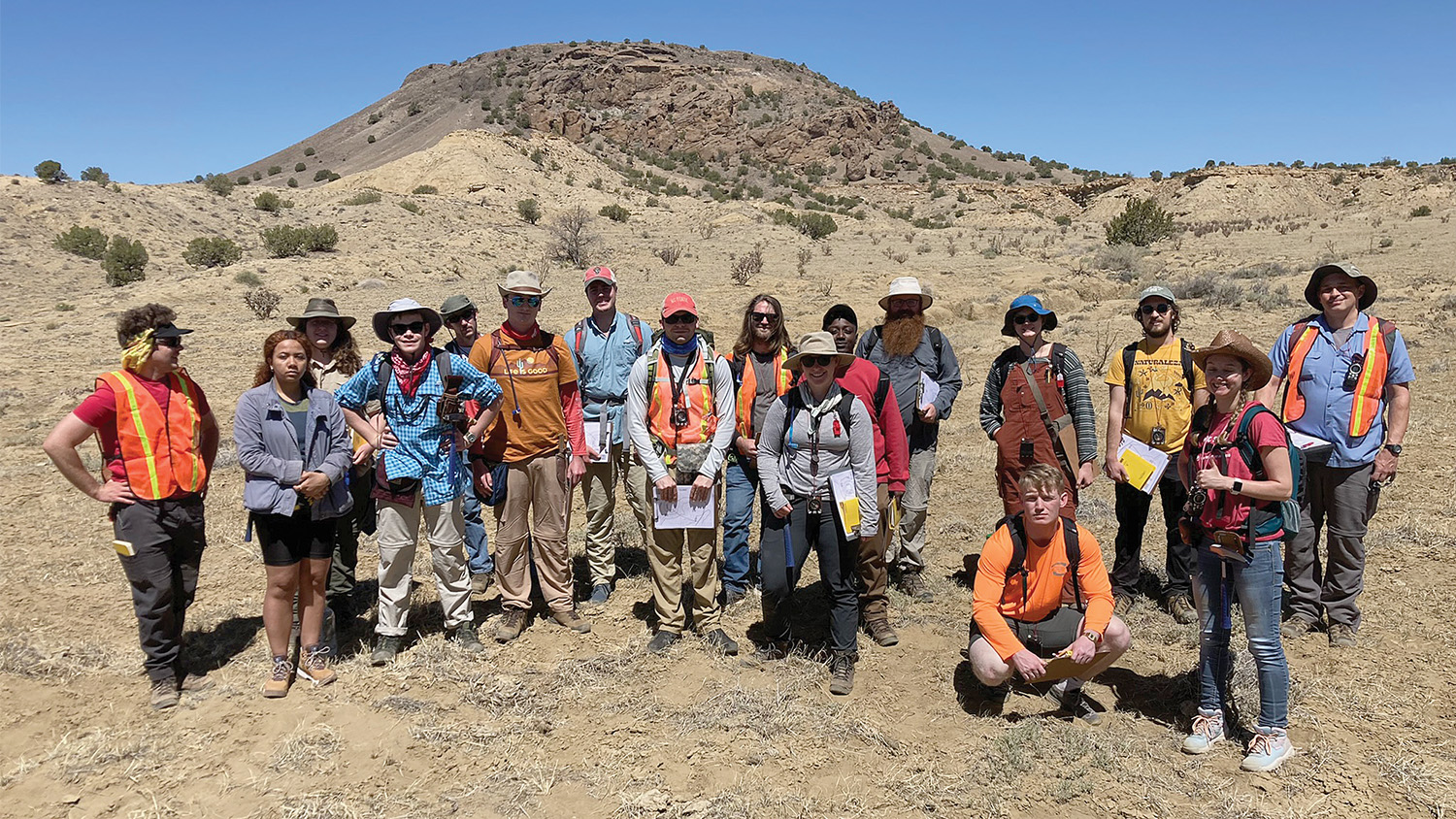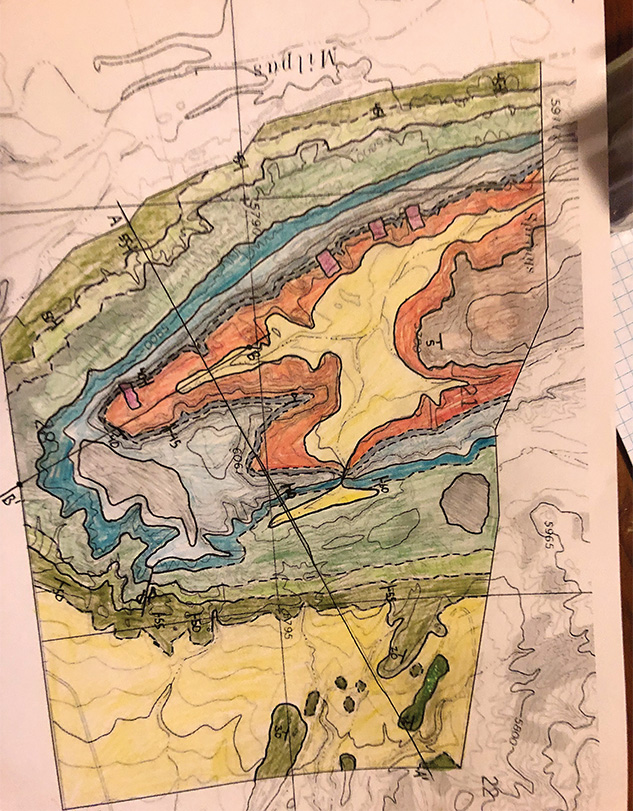Far Afield
Geology juniors and seniors explore New Mexico for a post-pandemic field trip.

Marine, Earth and Atmospheric Sciences Associate Professor Karl Wegmann believes that an essential experience his students should receive before they graduate is a chance to apply what they’ve learned in the classroom out in the field. But during the pandemic, even their labs were virtual.
So that made it all the more special last summer, when Wegmann took 14 juniors and seniors to New Mexico for their capstone course. The monthlong course, which traditionally took students out west before the pandemic pause, allows students to use equipment like a Brunton compass designed for geologic mapping and get familiar with symbols geologists use to interpret rock structures in 3D representations.

“They’re learning about how we put all these different components together into making a story about how the evolution of a particular part of the planet came to be,” says Wegmann, “and what it can tell us about resources.”
So why way out west? With the Southwest’s desert climate, researchers don’t have to spend so much time getting past the soil and trees to get to the rocks, which, in New Mexico, are pretty easy to read. “Just like the pages in a book,” Wegmann says, “there’s a general sequence to different rock types — sandstones, shales, mudstones, limestones.”


